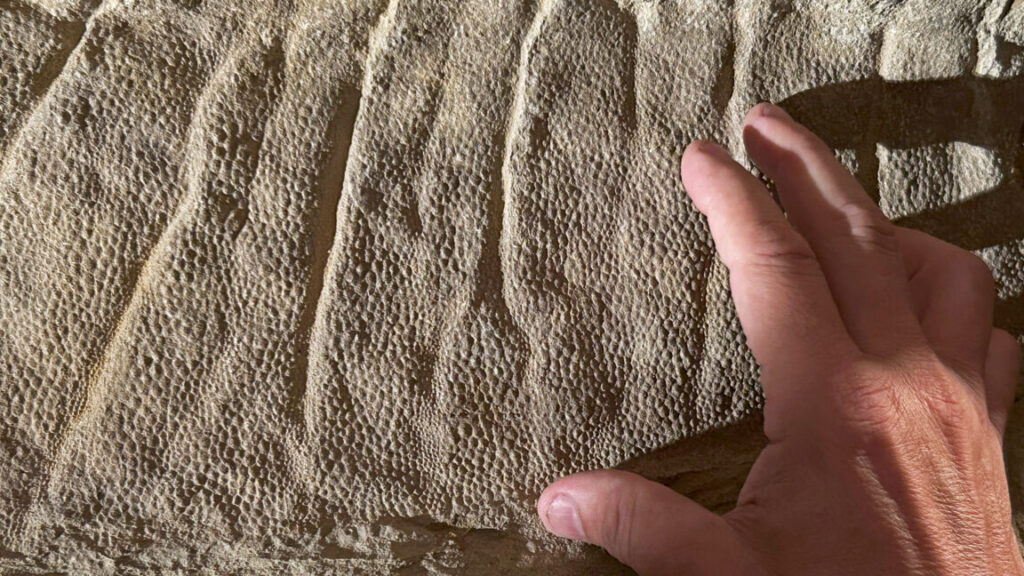As a result, the Edmontosaurus image got updated one more time. And some of the updates were rather striking.
Delicate elephants
Sereno’s team analyzed the newly discovered Edmontosaurus mummies with a barrage of modern imaging techniques like CT scans, X-rays, photogrammetry, and more. “We created a detailed model of the skin and wrapped it around the skeleton—some of these technologies were not even available 10 years ago,” Sereno says. The result was an updated Edmontosaurus image that includes changes to the crest, the spikes, and the appearance of its skin. Perhaps most surprisingly, it adds hooves to its legs.
It turned out both Knight and Horner were partially right about the look of Edmontosaurus’ back. The fleshy crest, as depicted by Knight, indeed started at the top of the head and extended rearward along the spine. The difference was that there was a point where this crest changed into a row of spikes, as depicted in the Horner version. The spikes were similar to the ones found on modern chameleons, where each spike corresponds one-to-one with the vertebrae underneath it.
“Another thing that was stunning in Edmontosaurus was the small size of its scales,” Sereno says. Most of the scales were just 1 to 4 millimeters across. They grew slightly larger toward the bottom of the tail, but even there they did not exceed 1 centimeter. “You can find such scales on a lizard, and we’re talking about an animal the size of an elephant,” Sereno adds. The skin covered with these super-tiny scales was also incredibly thin, which the team deduced from the wrinkles they found in their imagery.
And then came the hooves. “In a hoof, the nail goes around the toe and wraps, wedge-shaped, around its bottom,” Sereno explains. The Edmontosaurus had singular, central hooves on its fore legs with a “frog,” a triangular, rubbery structure at the underside. “They looked very much like equine hooves, so apparently these were not invented by mammals,” Sereno says. “Dinosaurs had them.” The hind legs that supported most of the animal’s weight, on the other hand, had three wedge-shaped hooves wrapped around three digits and a fleshy heel toward the back—a structure found in modern-day rhinos.

